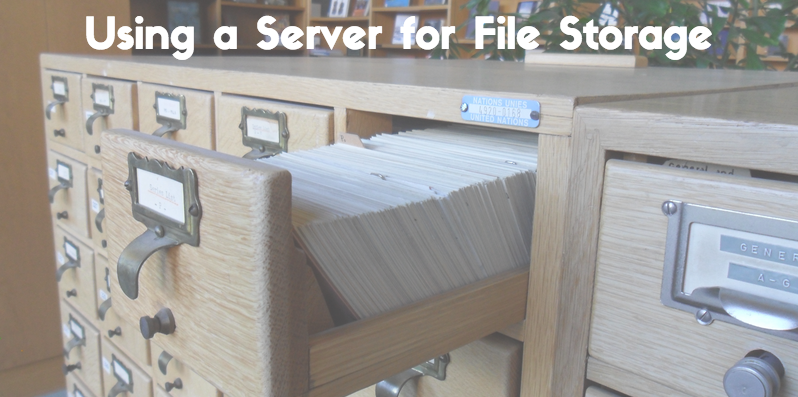
File storage is something everyone needs. Being able to keep up with data, media, documents, etc. is a critical part of daily life – especially at work. Using servers for file storage has become increasingly popular. We’ve written before about the many ways servers can be used. In this post, we’ll explain why these file servers are becoming more and more the norm.
Dedicated and Non-Dedicated File Servers
There are two primary ways to classify types of file servers. The first of these is dedicated and non-dedicated. A dedicated server is used exclusively as a file server – it is designed only for this purpose. Dedicated servers may be attached to viewing stations, where users are able to access files. Non-dedicated file servers may have some other use in addition to file storage. The second way types of file servers may be classified is by the method used to access the data on that server.
Classifying File Servers by Method of Access
When file servers are accessed online, it is typically done by either FTP (File Transfer Protocol) or HTTP. While file servers may be accessed using HTTP, they should not be confused with web servers. The difference here is that file servers accessed via HTTP serve only static files.
File servers may also be managed locally. These are connected via LAN (Local Area Network) to provide access to approved users. That access is typically made possible by either SMB/CIFS or NFS protocols.
Third-Party Online File Servers
Many users are turning outside their own organization to third-party file storage providers, such as DropBox, Google Drive, ZipCloud, Mozy, OneDrive, Egnyte or Box. This is certainly one option, but there is a certain level of risk associated with this. Any time proprietary data is stored with a third-party, avoiding the risk of a breach is no longer in the hands of the data’s owner. And as history has shown, these third-party providers can sometimes fail to keep data secure. In fact, Dropbox experienced a major breach as recently as October of 2014. The best way to keep data safe is to store it in some place where the owner is able to manage security.
What to Know About Data Protection with File Servers
There are several ways for data owners to protect their data using file servers. One of the key ways this is done is by controlling user access. Of course, this is only the start. The main thing that file server owners must remember is that their data is being stored on a server and protecting servers isn’t difficult – at least it doesn’t have to be.
How Can HostandStore Help?
At HostandStore.com, we’re always here to help. To learn more about what our servers can do for you, check out our great pricing plans or you can reach us via LiveChat on our site (when available) or through our 24/7 ticketing system.
